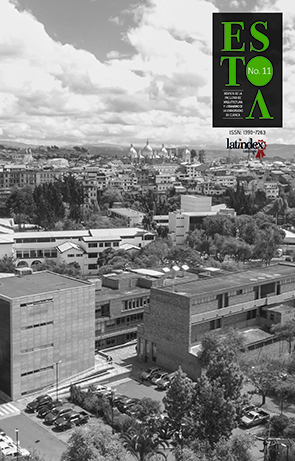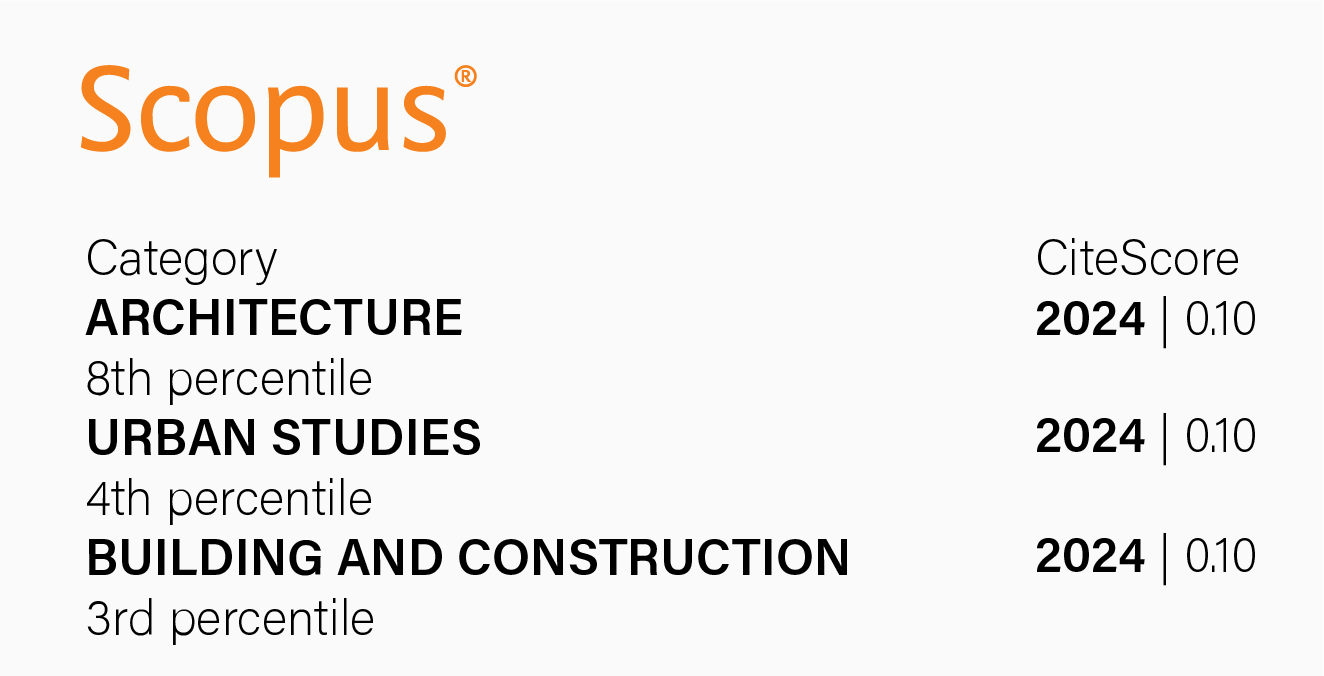More than place: location as project strategy in contemporary architecture
DOI:
https://doi.org/10.18537/est.v006.n011.a09Abstract
The bond between architecture and place should not be limited to a description of the situation (where and when), but it can also imply the taking of a decision about the way (how) and the reason (why) for this relationship which is sometimes, by itself, able to make the projectual act have sense. This paper reflects, through case studies, on several ways of addressing this topic from the point of view of the contemporary architectural design, and on the emergence of new mechanisms for representing, communicating and making it comprehensible. The paper also aims to overcome the idea of site plan as a mere technical tool, claiming for its new role as main ideological instrument for the development of the architectural projects.
Keywords: architectural project, architectural narrative, place, promenade, site plan.Downloads
References
Campo Baeza, A. (2000). Esencialidad. Más con menos. En A. Campo Baeza (Ed.), La idea construida. Madrid: Librería Técnica CP67 S.A. - Universidad de Palermo.
Corner, J. (2014). The Agency of Mapping: Speculation, Critique, and Investigation. En J. Corner & B. Hirsch (Eds.), The Landscape Imagination. Collected Essays of James Corner 1990-2010 (pp. 197-241). New York: Princeton Architectural Press.
Corner, J., & MacLean, A. S. (1996). Taking measures across the American Landscape. New Haven and London: Yale University Press.
Choisy, A. (1977). Historia de la Arquitectura. Buenos Aires: Víctor Leru.
Fariello, F. (2004). La arquitectura de los jardines. De la antiguedad al siglo XX. Barcelona: Editorial Reverté, S.A.
Harvey, D. (2008). La condición de la posmodernidad, Indagación sobre los orígenes del cambio cultural. Madrid: Amorrortu editores España S.L.
Herzog, J., & de Meuron, P. (2003). Edificio y plaza para el Fórum 2004. El Croquis (109/110 Herzog & de Meuron. La naturaleza del artificio), 306-323.
Incerti, G., Ricchi, D., & Simpson, D. (2007). Diller+Scofidio(+Renfro). Architetture in dissolvenza. Opere e progetti 1979-2007. Milano: Skira.
Jaraíz, J. (2013). SANAA. Espacios, límites y jerarquías. Buenos Aires: Diseño Editorial.
Koolhaas, R. (Ed.). (2004). Content. Köln: Taschen.
Krauss, R. (1979). Sculpture in the Expanded Field. October, 8 (Spring 1979), 30-44.
Kuhn, T. S. (2006). La estructura de las revoluciones científicas (3* ed ed.). México, D. F.: Fondo de Cultura Económica.
Le Corbusier. (1998). Hacia una arquitectura (2ª ed.). Barcelona: Apóstrofe.
Marjanovic, I., & Howard, J. (2015). Drawing Ambience: Alvin Boyarsky and the Architectural Association. Chicago: The University of Chicago Press.
Menard, L. (2016). El club de los metafísicos. Historia de las ideas en América. Barcelona: Ariel.
An Ordinance for ascertaining the mode of disposing of Lands in the Western Territory (Land Ordinance Act), (1785).
Rivas Sanz, J. L. d. l. (1992). El espacio como lugar: sobre la naturaleza de la forma urbana (1ª ed.). Valladolid: Universidad de Valladolid.
Tiberghien, G. A. (1995). Land art. New York: Princeton Architectural Press.
Tschumi, B. (1981). The Manhattan Transcripts. London / New York: Academy Editions / St. Martin's Press.
Published
How to Cite
Issue
Section
License
Copyright (c) 2017 Estoa. Journal of the Architecture and Urbanism Faculty of the Cuenca University

This work is licensed under a Creative Commons Attribution-NonCommercial-ShareAlike 4.0 International License.
The Journal declines any responsibility for possible conflicts derived from the authorship of the works that are published in it.
The University of Cuenca in Ecuador conserves the patrimonial rights (copyright) of the published works and will favor the reuse of the same ones, these can be: copy, use, diffuse, transmit and expose publicly.
Unless otherwise indicated, all contents of the electronic edition are distributed under a Creative Commons Attribution-NonCommercial-ShareAlike 4.0 International License.




